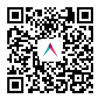“Internet of Things” or “IoT” is defined as the technology of connecting devices, systems and services that goes beyond machine-to-machine communications. But while this technology is now setting footprints in various sectors, like healthcare, transportation and energy, it has become a necessity for survival and competitiveness in the aerospace and composite component manufacturing industries.
Two Steps to Implementing IoT in Composites Manufacturing:
Step 1: Digital Tracking
Step 2: Context-Aware Optimized Decisions
While economies of scale is expected to reduce the unit cost with the increase in production volume, in many cases over time, the opposite result is achieved due to loss of process control causing accelerated increase in waste.The goal of leading aerospace manufacturers to increase quality, productivity and traceability, becomes especially challenging since building an aircraft requires collecting hundreds of thousands of data points throughout process.
Research shows that the waste is estimated at hundreds of thousands to millions of dollars per year for a mid-size fabricator.
Bringing the world of Internet of Things (IoT) to Composites Parts Fabrication
The Internet of Things (IoT) in manufacturing, leveraging RFID and mobility technologies, better tracks and manages materials, kits, tooling, assemblies and staff on the production floor. Combining best of class engineering and manufacturing practices & technologies, OEMs and fabricators can further push the productivity envelope, reducing Buy-to-Fly ratios.
Step 1: Regain control and visibility
Throughout the production line, assets inherit information from “parents” assets: assemblies inherit data from kits and kits inherit data from materials. In addition, tracking of tools and stations reaching total control and visibility result is a gigantic collection of data points over a variety of time frames. Being able to only access this data is itself of limited benefit.RFID technology enables real-time, accurate information of kits and rolls in and out of the freezer and provides alerts. Mobility platforms (tablets, smartphones) and wearable devices replace paper forms, barcode scanners and enable real-time reporting, collaboration and immediate action.
Intelligent automation to detect events, recognize context and act accordingly on the production floor is what’s missing in order to take real-time data driven actions. Some actions, if not taken at the right time, are no longer beneficial and can in some cases result in loss.
Step 2: Make context-aware and real-time data-driven optimized actions by looking at the complete PICTURE
To make the IoT useful, one must leverage the data into analytics and optimized decision making. While current practices rely on serial decision making by separate teams using loosely integrated systems, the IoT brings to the production floor an opportunity to practice a holistic approach. A fully integrated Total Production Optimization system bridges the gap between engineering and manufacturing, together with full tracking of assets on the production floor, to create a true, real-time holistic optimized decision framework.
Context aware decisions that can rise following a holistic approach are: which material to use based on expiration date, ETL (Exposure Time Left) or roll length; Triggering of work orders based on availability of tools; Creation of optimized cut plan and update of roll length according to actual work on the production floor and Tool maintenance plan; Purchasing decisions and submission to bids based on real-time data.
Get your assets to start talking and collaborating –
Implement Internet of Things in your Production Plants.
CLICK HERE and join the Factory of the Future!












